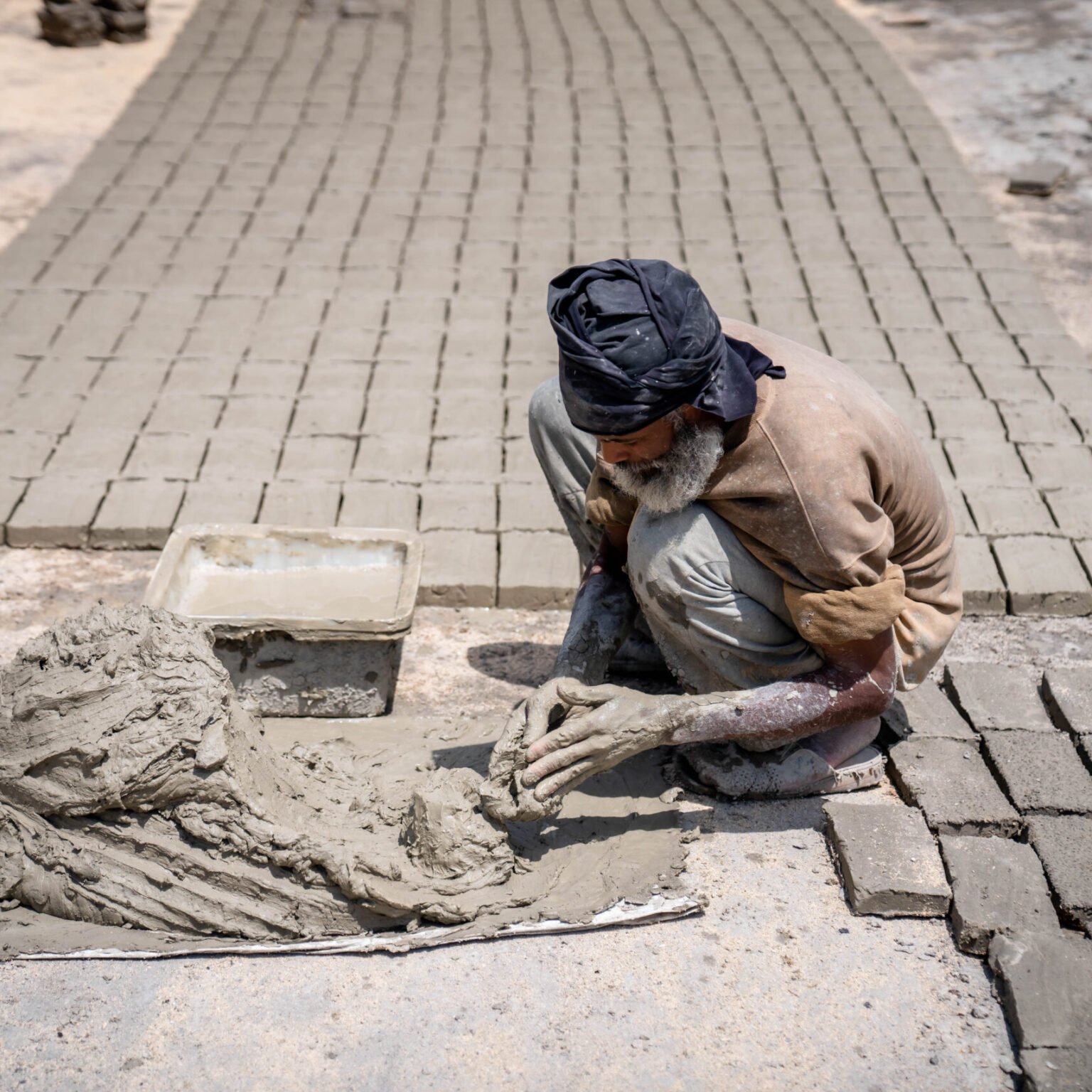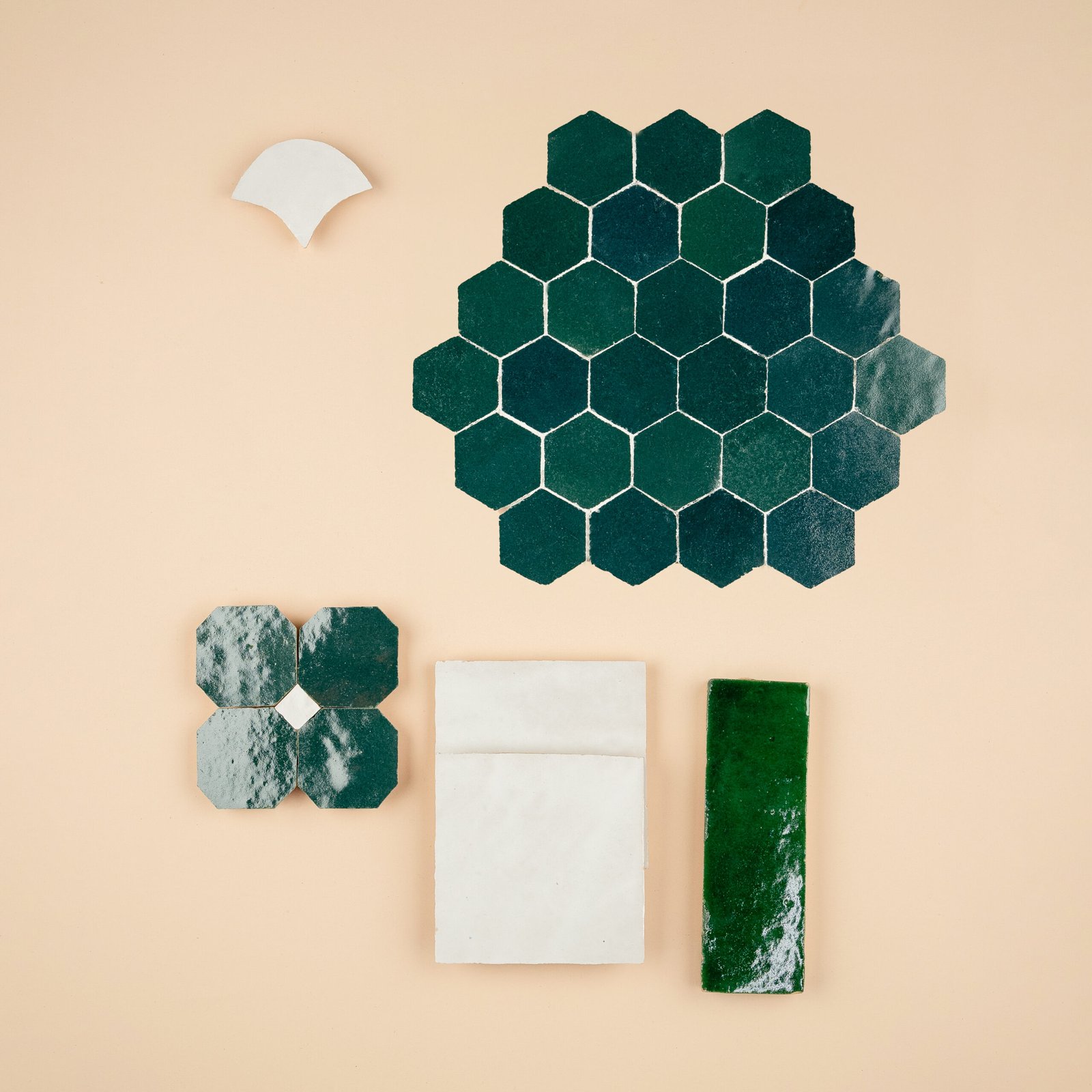
Blog
The History of Moroccan Zellige Tiles: From Ancient Art to Modern Luxury

The History of Moroccan Zellige Tiles: From Ancient Art to Modern Masterpiece
If you’ve ever seen Moroccan Zellige tiles, you know they’re more than just tiles—they’re pieces of art. With their vibrant colors, intricate patterns, and handmade charm, Zellige tiles have a way of transforming any space into something magical. But have you ever wondered where they came from? Let’s take a journey through the history of Moroccan Zellige tiles and discover how this ancient craft became a modern design favorite.
What Are Moroccan Zellige Tiles?
Zellige (pronounced zeh-LEEJ) are handmade ceramic tiles that originated in Morocco. The word “Zellige” comes from the Arabic word for “polished stone” or “tile,” and these tiles are anything but ordinary. Known for their vivid colors, geometric patterns, and slightly uneven textures, Zellige tiles are a true testament to the artistry and craftsmanship of Moroccan culture. Each tile is unique, making them a favorite for designers and homeowners who want to add a touch of authenticity to their spaces.

The Origins of Zellige: A 10th-Century Masterpiece
The story of Zellige begins in the 10th century in Morocco. Back then, artisans were inspired by the Roman mosaics they saw but wanted to create something uniquely their own. And so, Zellige was born—a form of art that combined mathematical precision with artistic expression.

The Influence of Islamic Art on Zellige
Islamic art played a huge role in shaping Zellige. Because Islamic traditions often avoid depicting animals or humans, artists turned to geometric patterns and intricate designs to express their creativity. These patterns weren’t just decorative—they were symbolic, representing unity, infinity, and the divine. Think of them as a visual language that tells a story through shapes and colors.
How Zellige Tiles Evolved Over Time
In the beginning, Zellige tiles were simple, using only white and brown colors. But as the craft evolved, so did the palette. By the 14th century, artisans had introduced blue, green, and yellow, and later, red became a popular choice. Today, Zellige tiles come in a rainbow of colors, each one handcrafted to perfection. The patterns have also become more complex, with designs ranging from stars and flowers to intricate mosaics that look like works of art.
The Art of Making Zellige Tiles: A Labor of Love
Creating Zellige tiles is no small feat. It’s a process that requires skill, patience, and a whole lot of love. Let’s take a closer look at how these beautiful tiles are made.
From Clay to Masterpiece: The Zellige-Making Process
It all starts with natural clay from the Fez region of Morocco. The clay is mixed with water, hand-shaped into tiles, and left to dry. Then, a layer of glaze is applied to one side, giving the tiles their signature shine. Finally, artisans use a sharp hammer to cut each tile into precise shapes—squares, triangles, diamonds—depending on the design. It’s a meticulous process that can take weeks, or even months, to complete.
Why Every Zellige Tile is Unique
Because each tile is handmade, no two are exactly alike. This slight imperfection is what gives Zellige its charm. It’s a reminder that these tiles aren’t just products—they’re pieces of art. When you use Zellige tiles in your home, you’re not just decorating—you’re telling a story.
Zellige in Modern Design: From Mosques to Luxury Homes
Zellige tiles have come a long way from their humble beginnings. Today, they’re a symbol of luxury and sophistication, gracing everything from mosques to high-end homes.
How Zellige Tiles Became a Symbol of Luxury
In the past, Zellige tiles were reserved for royal palaces and religious buildings. But as their beauty became more widely recognized, they started appearing in luxury homes around the world. Designers love them for their versatility and timeless appeal. Whether you’re going for a bold, colorful look or something more subtle and understated, Zellige tiles can make it happen.
Using Zellige in Contemporary Interiors
Zellige tiles are incredibly versatile. They look stunning in kitchens as backsplashes, in bathrooms as shower walls, or even as statement floors in living rooms. Their textured surface catches the light beautifully, adding depth and dimension to any space. Plus, their handmade quality gives them a warmth and authenticity that machine-made tiles just can’t match.
FAQs About Moroccan Zellige Tiles
- Are Zellige Tiles Hard to Clean?: Zellige tiles are relatively easy to clean, but their textured surface can make them a bit trickier than smooth tiles. A soft cloth and mild cleaner are usually all you need. Just avoid harsh chemicals that could damage the glaze.
- Can Zellige Tiles Be Used Outdoors?: Yes! Zellige tiles are durable and can be used outdoors in areas with mild climates. They’re resistant to UV rays and won’t fade in the sun. Just make sure to use the right kind of grout to prevent cracking in extreme temperatures.
- How to Install Zellige Tiles Correctly?: Installing Zellige tiles requires precision, especially if you’re working with intricate patterns. It’s best to hire a professional who has experience with handmade tiles. They’ll know how to handle the slight variations in size and shape to create a seamless look.
Conclusion: Why Zellige Tiles Are a Timeless Treasure
In a world of mass-produced goods, Moroccan Zellige tiles stand out as a reminder of the beauty of handmade craftsmanship. Their rich history, vibrant colors, and unique textures make them a timeless choice for anyone looking to add a touch of artistry to their home. Whether you’re renovating a kitchen, designing a bathroom, or just looking for inspiration, Zellige tiles are sure to leave a lasting impression








